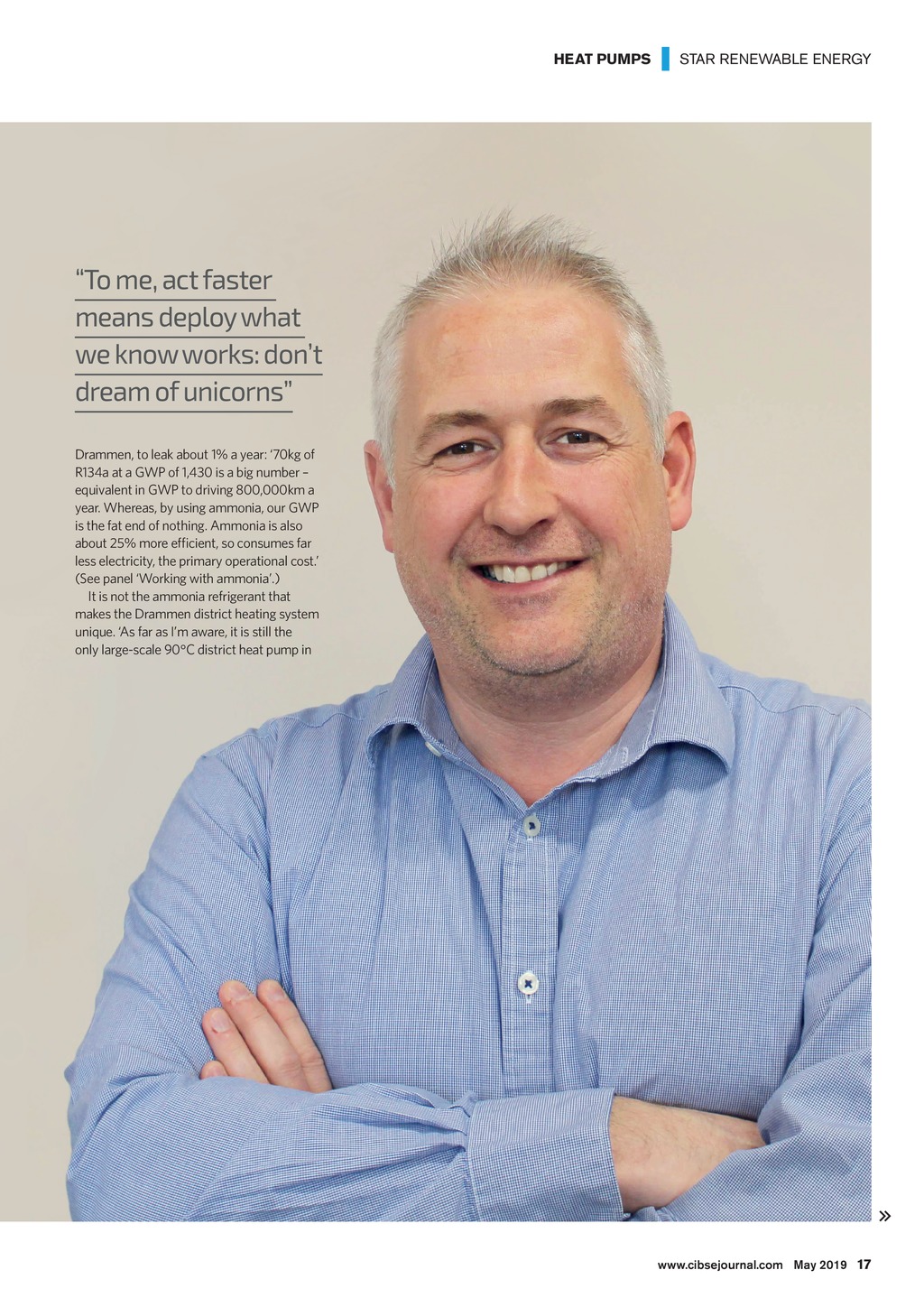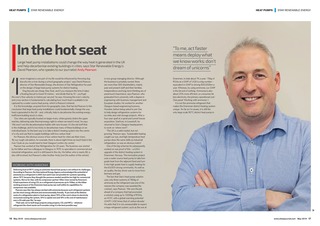


HEAT PUMPS | STAR RENEWABLE ENERGY In the hot seat Large heat pump installations could change the way heat is generated in the UK and help decarbonise existing buildings in cities, says Star Renewable Energys David Pearson, who speaks to our journalist Andy Pearson I never imagined a core part of my life would be influenced by throwing dog biscuits into a river during a school geography project, says David Pearson, director of Star Renewable Energy, the division of Star Refrigeration focused on the design of large heat pump systems for district heating. Dog biscuits are cheap, they float, and if you measure the time it takes a floating biscuit to travel 10 metres and divide that by 10 youll get the rivers flow velocity in metres per second, he says. Knowing the rivers velocity and cross-section is fundamental to calculating how much heat is available to be captured by a water source heat pump, which is Pearsons interest. It is this knowledge, acquired from his geography class, that has led Pearson to the conclusion that large heat pump installations could fundamentally change the way heat is generated in the UK and, critically, help to decarbonise the existing energyinefficient building stock in cities. Our cities are typically located on larger rivers, where gravity drains the upper reaches, delivering solar thermal energy right to where we need it most, he says. We wont win the decarbonisation battle with new houses. Its the old stuff that is the challenge, and its too tricky to decarbonise many of these buildings on an individual basis. So the best way is to take a district heating system into the centre ofa city and use that to supply buildings with low carbon heat. For Pearson, the obvious source of low carbon heat for cities are their rivers. Byour rough calculation, for example, there is about eight times as much heat in the river Clyde as you would need to heat Glasgows entire city centre. Pearson has worked at Star Refrigeration for 20 years. The business was started by his father and two colleagues in Glasgow, in 1970, to specialise in commercial and industrial refrigeration, and it is still based in the city. His father, who is nearly 88, is also still involved, but Pearsons older brother Andy [not the author of this article] WORKING WITH AMMONIA Delivering heat at 90C using an ammonia-based heat pump is not without its challenges. According to Pearson, the International Energy Agency acknowledged the potential of ammonia as a refrigerant in 2007, but said it was not possible for systems operating above 70C because they thought the pressure needed would be too high for commercial systems. Not so for Star, with its compressor partner Vilter (now owned by Emerson). It had experience of using CO2 as a refrigerant at pressures up to 110bar, so the65bar working pressure of the Drammen heat pump was well within its capabilities ifa compressor was available. Pearson says Star has always worked with ammonia because such refrigerant systems are the most energy efficient and environmentally friendly. If you look at the lifetime costs of a refrigeration plant or heat pump, about 70% of the cost is down to electricity consumed running the system, 15% is capital cost and 15% is the cost of maintenance over a 20-odd-year life, he says. That said, weve built large projects using propane, CO2 and HFCs whatever refrigerant the client wants well consider using it in the best possible way. is now group managing director. Although the business is privately owned, there are more than 300 shareholders, mainly past and present staff and their families. Independence and long-term thinking are of paramount importance, says Pearson, who graduated from university with a degree in engineering with business management and European studies. He worked for another Glasgow-based engineering business, Howden, before being asked to join Star to help design refrigeration systems for ice rinks and cold-storage projects. After a four-year spell at a spiral and tunnel freezer acquisition, Starfrost, in Lowestoft, he returned to Stars Glasgow headquarters towork on where next?. The UK is a solid market, but not growing, Pearson says. Sustainable heating caught our eye, and high-temperature heat pumps draw the same skills as industrial refrigeration, so was an obvious match. One of the big schemes he subsequently worked on was proof of this a 25m upgrade of the district heating system in Drammen, Norway. This innovative project uses a water source heat pump to take lowgrade heat from the adjacent fjord and turn it into high-grade heat to supply heating for the 60,000-strong community. As well as air quality, the key driver was to move from biomass and gas. The fact that Stars heat pump solution uses only three systems of 780kg of ammonia as the refrigerant was one of the reasons the company was awarded the contract, says Pearson. We won the job ahead of a company that had promoted a solution using up to 7,000kg of R134a, an HCFC with a global warming potential (GWP) 1,430 times that of carbon dioxide. He adds that it is not unreasonable to expect a large refrigerant system, such as the one at 16 May 2019 www.cibsejournal.com CIBSE May19 pp16-18, 20 Dave Pearson Supp.indd 16 26/04/2019 16:15